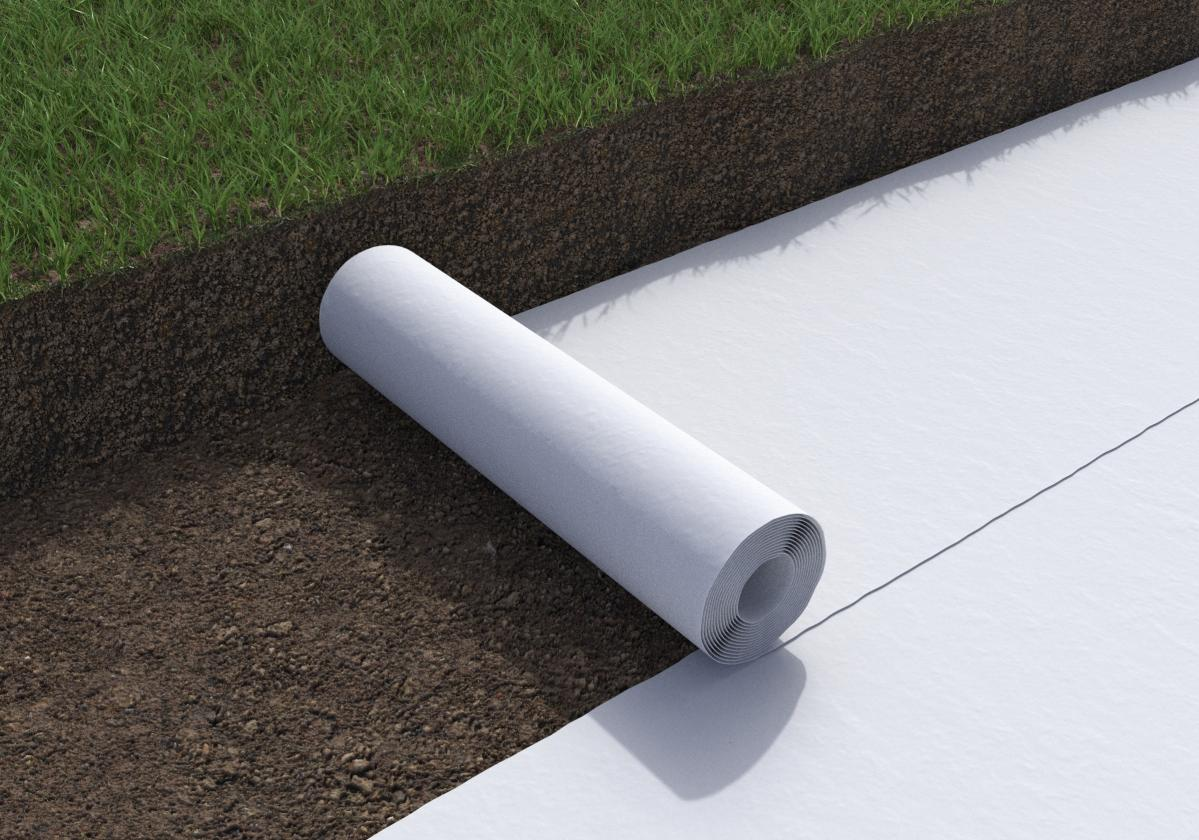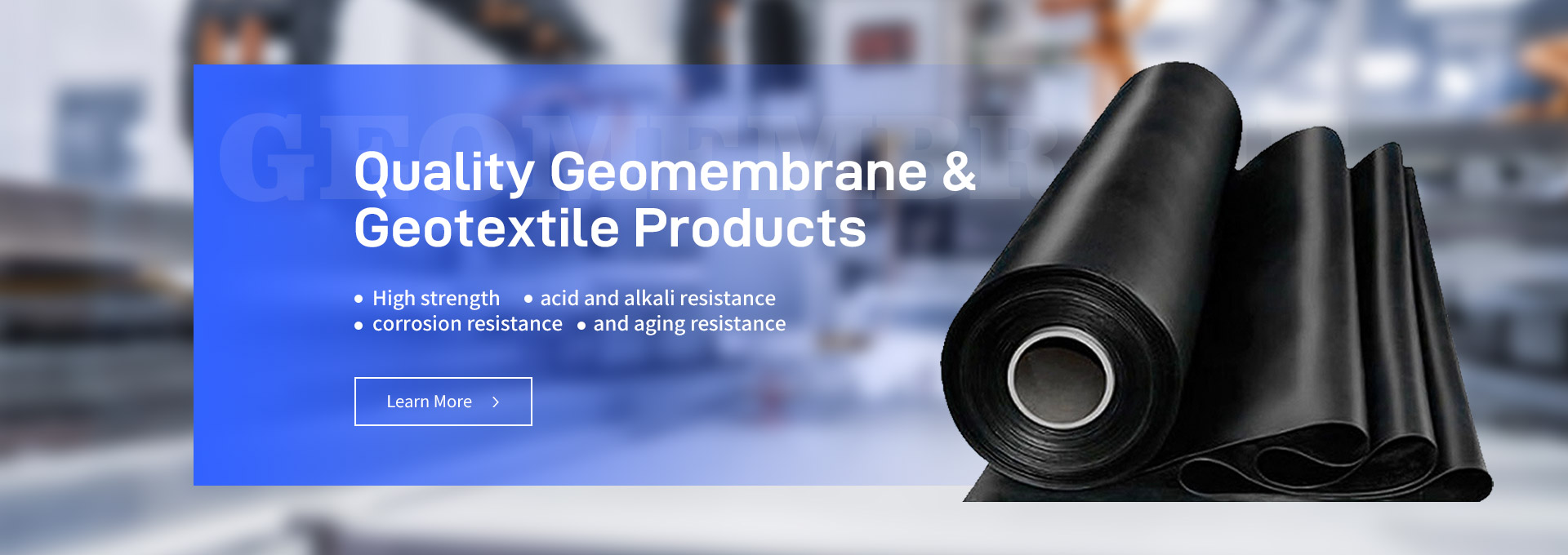Geotextiles are essential materials in modern engineering and construction projects, offering versatile solutions for soil stabilization, drainage, and erosion control. These synthetic fabrics, typically made from polyester or polypropylene, play a crucial role in enhancing the longevity and functionality of infrastructure. However, selecting the right geotextile for a project can be challenging, as numerous factors, such as soil type, project requirements, and environmental conditions, must be considered.

Key Parameters to Consider When Choosing Geotextiles
1. Material Composition
Geotextiles are typically made from either polyester (PET) or polypropylene (PP). Both materials offer excellent durability and resistance to chemicals, but they differ in some properties:
Polypropylene (PP): Lightweight, resistant to moisture absorption, and suitable for applications in wet environments.
Polyester (PET): Higher tensile strength, better performance under high temperatures, and ideal for applications requiring long-term stability.
When selecting geotextiles, consider the material's compatibility with the surrounding environment. For example, polypropylene is often the preferred choice for drainage systems due to its water resistance, while polyester is better suited for projects requiring reinforcement.
2. Weight
The weight of geotextiles, typically measured in grams per square meter (gsm), determines their durability and suitability for specific applications:
Lightweight Geotextiles (100-200 gsm): Suitable for filtration and separation in low-load applications such as landscaping.
Medium-Weight Geotextiles (200-400 gsm): Ideal for drainage, erosion control, and moderate soil stabilization.
Heavyweight Geotextiles (400+ gsm): Best suited for reinforcement, retaining walls, and high-load applications.
For projects requiring long-term durability and high performance, it’s worth consulting a geotextiles manufacturer to identify the appropriate weight for the application.
3. Tensile Strength
Tensile strength is a critical parameter, especially for projects involving high loads or soil reinforcement. It measures the fabric's ability to resist breaking under tension and is usually expressed in kilonewtons per meter (kN/m).
Projects with heavy loads, such as highways or embankments, require geotextiles with high tensile strength.
Lightweight applications, such as landscaping or drainage, may not demand high tensile strength, allowing for more economical options.
For achieving optimal results, the best geotextiles often strike a balance between tensile strength and cost-effectiveness, tailored to the specific project needs.
4. Permeability and Filtration
Permeability refers to the ability of the geotextile to allow water to pass through while retaining soil particles. This is critical in drainage and filtration applications where water needs to flow freely without soil erosion.
Key factors to consider include:
Pore Size: Smaller pore sizes are better at filtering fine particles, while larger pores allow for higher water flow rates.
Permittivity: The rate at which water passes through the geotextile, measured in liters per second per square meter (L/s/m²). High permittivity is essential for drainage projects.
Consulting with a geotextiles manufacturer can help determine the optimal balance between filtration and permeability for your project.
5. UV Resistance
In projects where geotextiles will be exposed to sunlight, UV resistance is a crucial consideration. Prolonged exposure to ultraviolet radiation can degrade the material over time, reducing its effectiveness.
For outdoor applications such as erosion control or landscaping, choose geotextiles with UV stabilizers to ensure long-term durability.
6. Durability and Longevity
Geotextiles used in long-term projects, such as retaining walls or landfill liners, must be durable enough to withstand environmental and mechanical stresses over time.
Look for fabrics with high puncture resistance, abrasion resistance, and chemical stability. A reputable geotextiles manufacturer will provide detailed product specifications to ensure durability and compliance with project requirements.
7. Environmental Considerations
For environmentally sensitive projects, such as those near wetlands or water bodies, it’s essential to select geotextiles that are non-toxic and environmentally friendly.
Biodegradable options are available for temporary applications, such as short-term erosion control, where the geotextile will naturally break down after serving its purpose.
How to Choose the Best Geotextiles for Your Project?
Selecting the best geotextiles for your project requires a thorough understanding of the project’s needs and the geotextile’s performance characteristics. Here are some practical steps to guide your decision:
1. Define the Project Requirements
Determine the primary function of the geotextile (e.g., filtration, reinforcement, erosion control) and the environmental conditions it will face.
2. Evaluate Soil and Load Conditions
Conduct soil analysis and evaluate load-bearing requirements to identify the appropriate material, weight, and tensile strength.
3. Consult with Experts
Work with engineers, designers, and a reliable geotextiles manufacturer to ensure the specifications meet the project’s demands. Reputable manufacturers can provide customized solutions and technical support.
4. Test for Compatibility
Request samples and conduct performance tests, such as permeability and tensile strength tests, to confirm compatibility with project conditions.
5. Consider Cost and Availability
While cost is an important factor, avoid compromising on quality. The best geotextiles offer long-term value by ensuring durability and reducing maintenance costs.
Conclusion
Choosing the right specifications for geotextiles is crucial for ensuring the success and longevity of your construction or engineering project. By considering key parameters such as material composition, weight, tensile strength, permeability, and UV resistance, you can select the best geotextiles tailored to your project’s needs.
Working with a trusted geotextiles manufacturer is equally important, as they can provide high-quality products and expert guidance to ensure compliance with industry standards. With the right geotextile in place, you can improve project efficiency, reduce costs, and achieve long-term performance in various applications.

